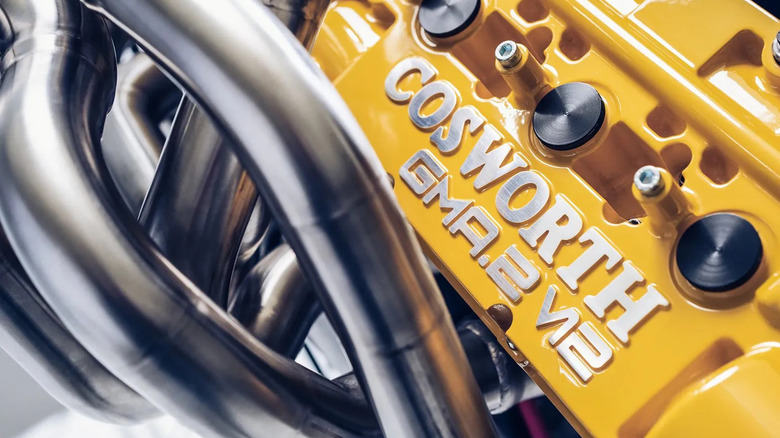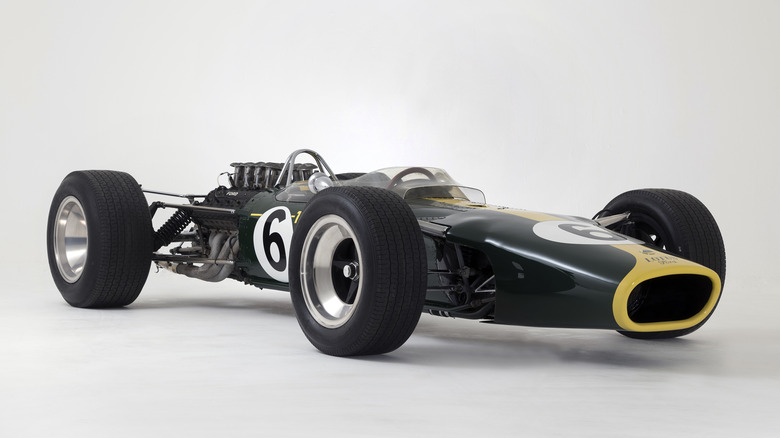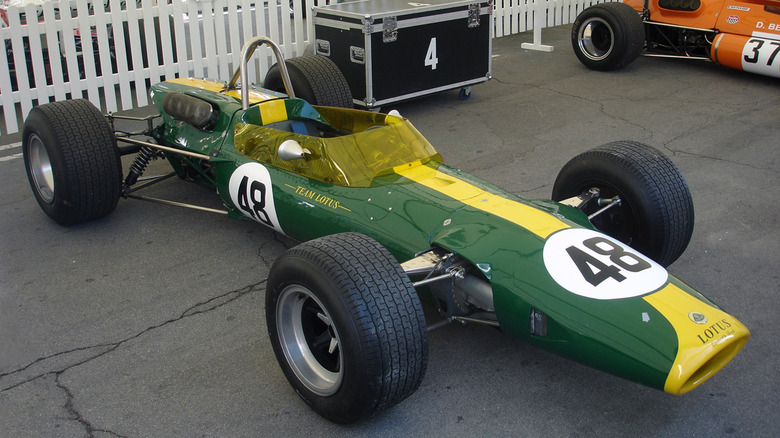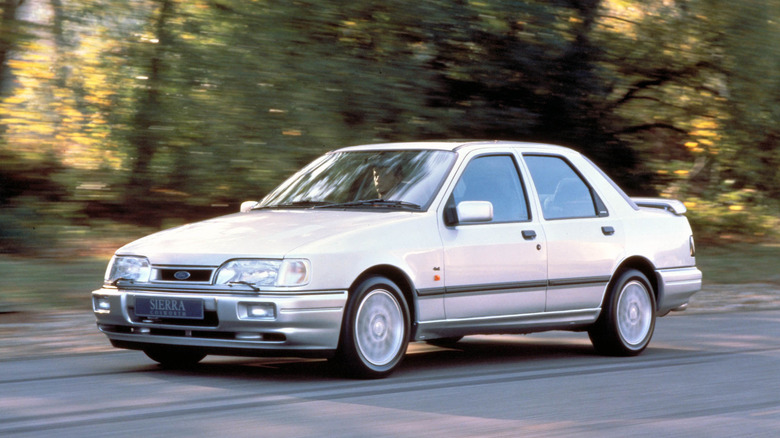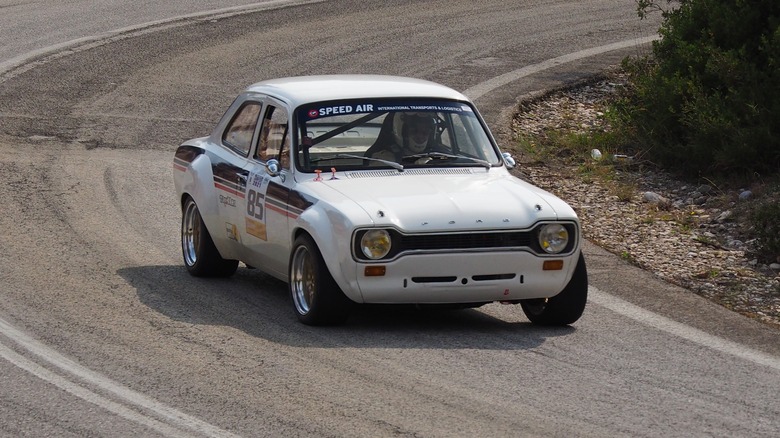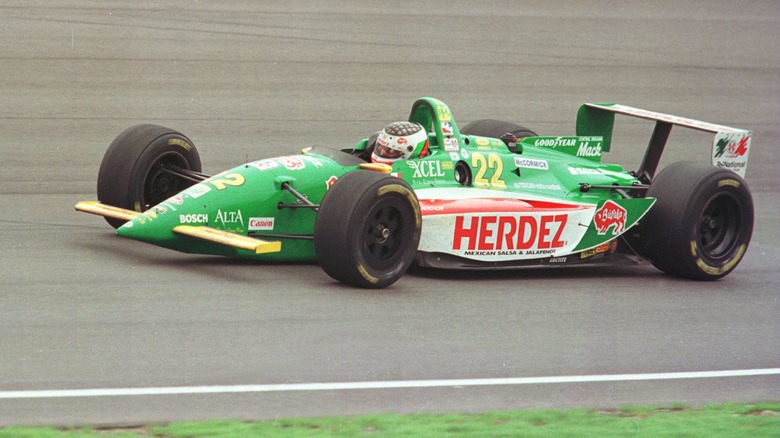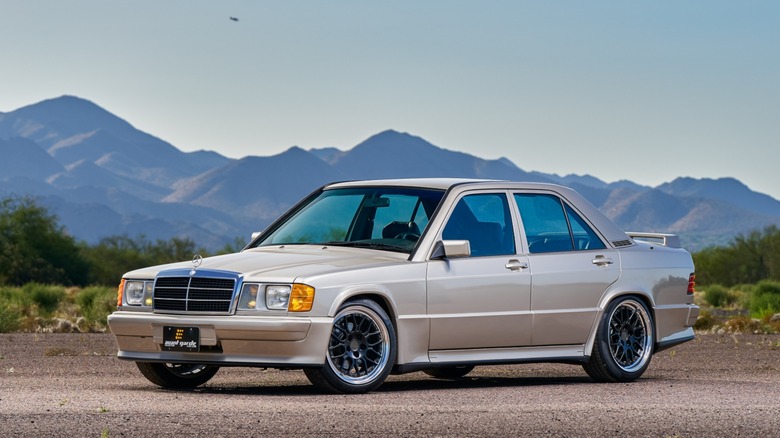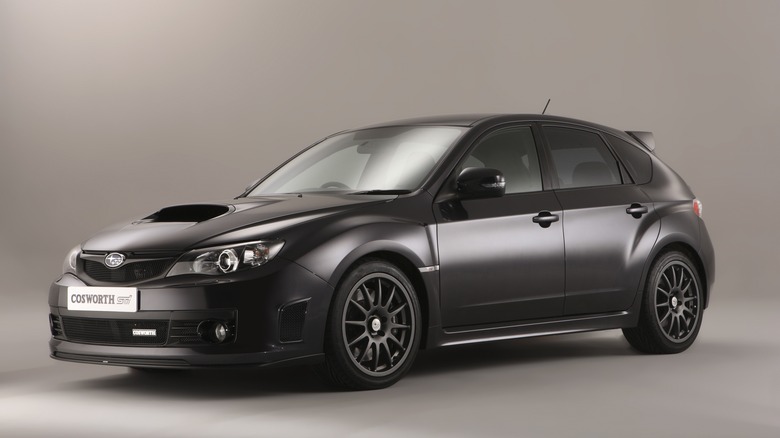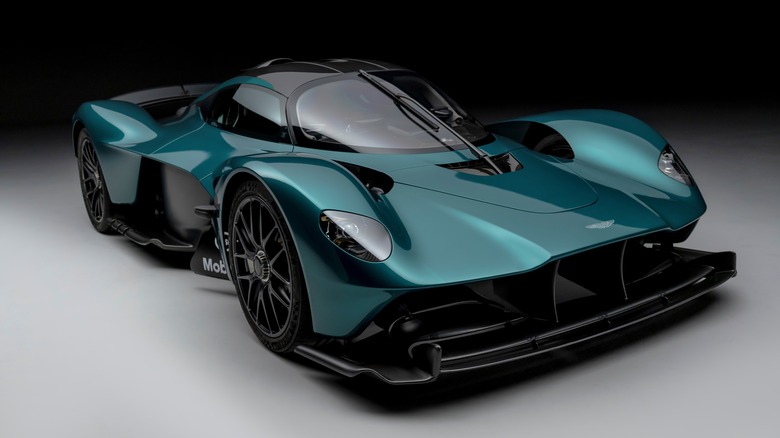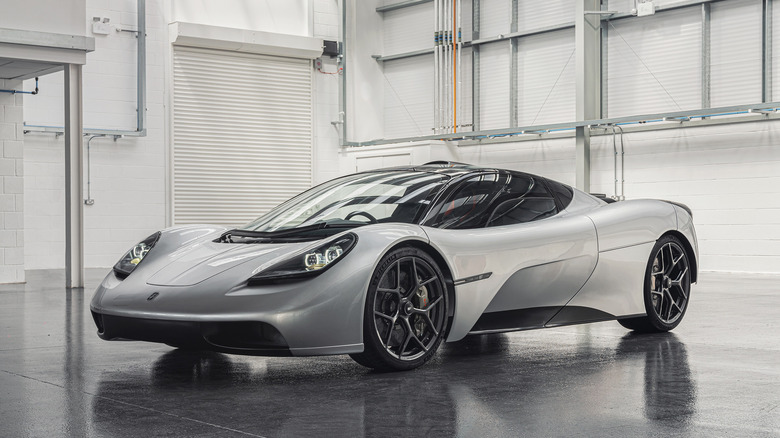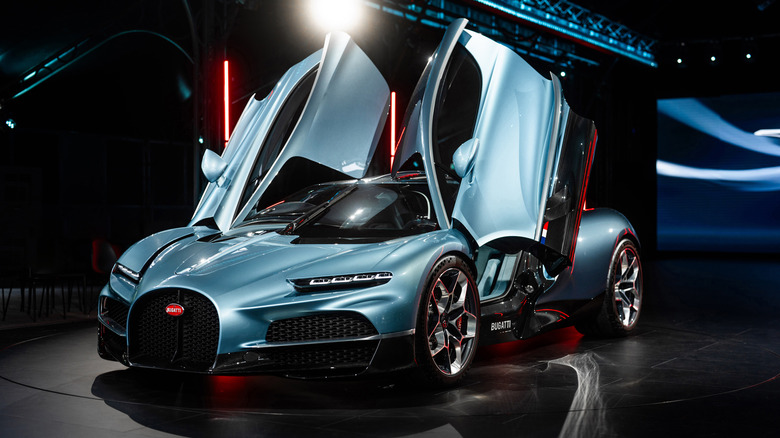10 Of The Greatest Cosworth Engines Ever Made
Cosworth is a name that resonates with every car enthusiast, bringing memories of numerous chequered flags, of David vs. Goliath battles, and just pure engineering ingenuity. From its humble beginnings in 1958, when Lotus engineers Keith Duckworth and Mike Costin founded the company, Cosworth became synonymous with some of the greatest internal combustion engines. From street to circuit, the company's creations pushed the boundaries of what is possible by burning fossil fuels.
More than anything, Cosworth's name imprinted on the engine's headcover carried weight. It meant motorsport legacy. It meant engineering precision and high performance. You could rely on Cosworth engines to win races and enjoy driving. Even today, Cosworth's engines offer a driving experience that overwhelms you with adrenaline and excitement.
We found it fitting to celebrate all those great machines and capture the true Cosworth spirit. In this trip down memory lane, we'll give Cosworth's greatest engines the recognition they deserve. Crucially, we'll equip you with some juicy facts about one of the automotive industry's most important companies that's not an automaker. Ignition: ON.
Cosworth DFV V8
The DFV (Double Four Valve) engine is not only one of Cosworth's greatest engines but also one of the most significant race engines, period. Drivers used it in F1, the Indy 500, and 24 Hours of Le Mans, amassing 155 Grand Prix wins, 131 pole positions, and 12 Drivers' Championships in its 16.5-year lifespan. What the DFV has achieved is the stuff of dreams, yet nobody expected it to be so successful in the first place — certainly not against the formidable racing competition in the 1960s and 1970s.
The DFV was a V8 engine developed by Keith Duckworth to meet the new F1 rules in 1966, where the maximum capacity was lifted from 1.5 liters to 3.0 liters. Manufacturers were free to experiment with the cylinder count, though. So, Ferrari and Maserati went with V12s, while British Racing Motors (BRM) went with a wild H16 architecture. Meanwhile, Cosworth went with a good old V8. In theory, this disadvantages the DFV because more cylinders equal more torque and better cooling.
Still, the DFV 3.0-liter V8 engine was much more compact, making the Lotus 49 F1 car smaller. Cosworth also opted for a flat plane crank for a simple exhaust, 32-degree valves, and refined chambers with a pent-roof design that created a swirl of the air-fuel mixture, producing more power with less fuel. Combustion chamber swirl is essential in modern engines, yet Duckworth penned the idea without using CAD. Still, his ingenuity extracted up to 515 horsepower at 11,300 rpm in the last iteration, an amazing number for the era.
Cosworth FVA
While Cosworth's DFV V8 dominated racing's highest echelons, its smaller four-cylinder brother was doing the same in F2. The FVA naturally-aspirated inline-4 had a measly 1.6-liter capacity and was based on a production block from the Ford Cortina, yet still made up to 225 horsepower at 9,000 rpm.
The gear-driven DOHC (Dual Overhead Camshaft) engine had 16 valves, which was advanced for the era and created the four-valve-per-cylinder renaissance. Even the name of the engine signified its 16-valve layout (Four Valve type A) — that's how important it was. The innovations didn't stop there. The FVA also had a dry-sump oil system, which allowed for lower center of gravity and higher sustained cornering speeds without starving the engine of oil.
All these advancements led to a serious increase in power and efficiency. For instance, compared to the 1.5-liter Coventry Climax FPF 1.5-liter Mk 2, which predated but also competed against the FVA in F2, Cosworth's engine had 38% more horsepower per volume, created a 15% higher break mean effective pressure, and had a 17% higher piston speed.
The FVA was used in the Lotus 48, which was based on the Lotus 49 F1 car, and the Brabham BT23. Cosworth's FVA engine won all races in 1967, with the Brabham BT23 winning six Grand Prix and the Lotus 48 four. Overall, the FVA competed in 1967, 1968, 1969, and 1971, winning 78% of the races, annihilating competitors like the Ferrari type 166 V6 and BMW M12/2 inline-4 engines.
[Featured image by Mutari via Wikimedia Commons | Cropped and scaled | CC0 1.0]
Cosworth YB
Cosworth was primarily known for high-revving, naturally-aspirated engines in the first two decades after its inception. However, turbocharged engines started gaining steam in the 1980s, with Cosworth losing its place at the top of motorsport to these boosted beasts. So, the engineering company needed an answer, and thus, the YB family was born. However, unlike its naturally aspirated wonders, Cosworth developed the YB to power both race cars and road-going cars. The reason — it was going to compete in the Group-A touring car category, where homologation specials were necessary to compete.
Cosworth based the YB on the SOHC Pinto/T88 2.0-liter four-cylinder engine but completely reworked it to allow turbocharging. So, the YB had a different cylinder head with hydraulic valve lifters and strengthened crankshaft, rods, and pistons. In its initial road-going form, it produced 201 horsepower and powered the Ford Sierra Cosworth RS — a homologation special we truly wished would've made it to the U.S. However, in racing trim, the YB produced 370 horsepower, which rose to 550 horsepower in the most powerful Ford Sapphire RS500, with the road-going version of this model producing 224 horsepower.
Like its predecessors, the Cosworth YB engine won multiple races and championships in touring car racing, where it competed from 1987 to 1992. Crucially for enthusiasts, the road-going YB in the Sierra Cosworth is a very tunable engine with internals that can cope with 500 horsepower quite easily.
Cosworth BD
Cosworth's FVA engine is the stuff of legends, but few people could experience it in the real world. Fortunately, you can have most of the same in the production-spec BDA, which used the head design from the FVA engine with a Ford Kent iron block. The biggest change was a regular cogged belt drive instead of the gear drive in the FVA, hence the name "Belt Drive type A."
Mike Hall, a Cosworth engineer, was tasked with developing the 1,601cc naturally-aspirated unit that would've been more powerful than the twin-cam Lotus-Ford engine. Still, Ford was also involved in the development stage, as the BDA was then installed in the Escort RS1600, one of the early rally legends. The road-going version made 113 horsepower at 6,500 rpm, enough for a brisk 0-60 mph time of 8.9 seconds.
Not impressive enough for you? Cosworth continued to push the 1.6-liter capacity to greater heights with the BDD, which made 200 horsepower. However, subsequent iterations were even more impressive. Notably, the 1,700cc BDB and BDC produced 200 horsepower and 230 horsepower, respectively. Then, the 1,790cc BDE made 245 horsepower, while the 1,927cc BDF rated at 275 horsepower.
The pinnacle of the naturally aspirated builds was the BDG engine, which was used in F2 and even Le Mans. This 1,975cc unit produced 275 horsepower at 9,250 rpm. However, Cosworth wasn't finished with the BD family, and in 1986, a turbocharger entered the mix with the 2,137cc BDT-E, which produced north of 500 horsepower.
Cosworth XB/XD
Cosworth was enjoying successful IndyCar campaigns with the 90-degree V8 DFX engine in the 1970s and 1980s. A version of that engine, the DFR, was also used in F1, where in 1988, it was the most powerful naturally aspirated unit on the grid. Still, these engines were a warm-up for the X family of Cosworth engines, which were turbocharged power beasts.
The first variant was the XB, which ran on methanol and was used by Ford in the Champ-C Series. However, Cosworth used an improved variant of the XB in the Indy Racing League, winning the 1996 Indianapolis 500. However, even more impressively, eight cars with the XB engine finished in the top ten, showcasing Cosworth's engineering supremacy.
The star of the show here was the XD engine, though, which was developed for the CART series. Like most Cosworth engines, it was an over-engineered machine with a wet-lined alloy block, 16 fuel injectors, titanium connecting rods, and a billet steel crankshaft. It was also lighter and more compact than the XB, and its center of gravity was lower.
As a result, despite its meager 2.65-liter capacity, this turbocharged beast produced around 850 horsepower in racing trim and could rev to 14,700 rpm. So, somewhat unsurprisingly, Michael Andretti won five races with the XD engine behind his back in the 1997 CART championship. Meanwhile, the XB predecessor won the CART Manufacturer's championship in 1995 and two PPG Indy Car driver's titles — Nigel Mansell in 1993 and Jacques Villeneuve in 1995.
Mercedes-Benz 190E 2.3-16 Cosworth
By the end of the 1980s, Cosworth mainly produced or re-engineered engines for Ford and Lotus. However, after showing its mettle in every racing category, the British company got a phone call from none other than Mercedes-Benz to collaborate on an engine for a Group A touring car. It was an important task because, during that era, Merc's arch-rival, BMW, dominated touring car championships with the E30 M3.
Mercedes-Benz ultimately won with the AMG-tuned (with the help of Cosworth) 190E 2.5-16, though not before it broke the 50,000-kilometer record in 1983, finishing the distance in 201 hours, 39 minutes, and 43 seconds with the 190E 2.3-16 Cosworth, a sports sedan with a very special engine. Cosworth re-engineered the existing 2.3-liter four-cylinder in the 190E, employing a new aluminum head with dual overhead camshafts and four valves per cylinder. Like the legendary DFV, this four-cylinder also had pent-roof combustion chambers for more efficient combustion.
These upgrades resulted in 182 horsepower at 6,200 rpm in its road-going form, a whole 52 horsepower more than Merc's original engine. 0-62 mph took 7.8 seconds, and the car was capable of hitting 144 mph. More importantly, the engine had an oversquare design, so it could rev easily to 7,100 rpm. Unfortunately, Mercedes-Benz only offered a detuned version with 167 horsepower for the North American market. Mercedes-Benz did its fair share of updates and equipped all versions of the 190E 2.3-16 with a limited-slip differential, multilink rear suspension, and a five-speed manual transmission with a dogleg first gear.
Subaru Cosworth Impreza STI CS400 2.5-liter Boxer
During the 2000s, Cosworth wasn't the formidable force it once was in racing. The company still produced F1 engines for various teams, but in 2014, it left the series and hasn't returned since. Fortunately, Cosworth then focused its efforts on road-going machines, with the Subaru Impreza STI CS400 being the first car of the brand's latest renaissance.
Even by today's standards, the CS400 is a beast. Cosworth took the original 2.5-liter flat-four engine and used its magic engineering wand to push it to 395 horsepower and 398 lb-ft of torque. Cosworth used every trick it had in its book, like high-performance pistons produced with the same method as the brand's F1 engines to achieve those figures. Furthermore, the engine had stronger connecting rods, new engine bearings, heavy-duty cylinder head studs, and a new turbocharging system.
According to Subaru, the Cosworth Impreza STI CS400 hit 62 mph in just 3.7 seconds and did the quarter mile in 12.75 seconds. Reviewers said the engine had a significant turbo lag, but it was still a potent powerplant. Overall, it might not have been one of Cosworth's most polished creations. Still, it brought it back on the front pages and set up the company for a huge onslaught in the hypercar market.
Aston Martin Valkyrie Cosworth RA V12
In 2016, Aston Martin and Red Bull Advanced Technologies shocked the world by announcing their jointly-developed Valkyrie hypercar. This bonkers hybrid machine was imagined as a race car for the road, developed by none other than Adrian Newey. In fact, Newey said that its performance was close to that of an LMP1 car. That's a serious claim, and Aston Martin will be able to prove it at the 2025 Le Mans race.
At the heart of the Valkyrie was a Cosworth-developed V12, one of the most impressive internal combustion engines ever made. Codenamed RA, the 6.5-liter unit is an engineering marvel, producing 1,000 horsepower and revving all the way to 11,100 rpm. You read that right — the RA revs like an F1 engine and makes power like a turbocharged one. It must be exhilarating to drive, too, because of the eleven thousand revolutions euphoria. Only in the Valkyrie, owners also get to push a Kinetic Energy Recovery System (KERS) button for an additional 140-horsepower boost. It might come in handy, perhaps never, because who would race a $3.5 million machine?
Look, the Cosworth RA will be experienced by only 150 lucky deep-pocketed buyers. However, it's refreshing to see such a naturally aspirated gem in an era when turbochargers are the norm. It is a literal gem, with most of its parts carved from solid material for ultimate strength and low weight (454 pounds). Aston Martin called it the "ultimate expression of the combustion engine." Little did they know the Cosworth was just getting started.
GMA T.50 and T.33 V12
When star engineer Gordon Murray announced he was working on a McLaren F1 successor, the automotive world went wild. Unsurprisingly, because the F1 possessed speed and exhilaration like no supercar before or after. In 2021, Gordon Murray Automotive (GMA) showcased what it has been working on in the last few years — a super lightweight three-seater supercar.
Called the T.50, GMA's first foray was the 21st-century McLaren F1. Crucially, it was the antithesis of any other modern supercar. There is no hybrid here, just a screaming Cosworth-developed V12 paired with a six-speed manual. The driving experience was to take center stage, not performance. Even so, with 664 horsepower, the lightweight 3.9-liter V12 can propel the T.50 to 226 mph.
GMA doesn't disclose 0-60 times. But who cares when you have an engine that can rev to 12,100 rpm? Twelve. Thousand. It can also hit the rev limiter from idle in 0.3 seconds. Let that register for a second. With the T.50, Murray willingly surrendered to the 0-60 craze and replaced it with pure ecstasy. Just listen to it! Oh, and because it weighs just 2,198 pounds, you could throw it around like a race car. It even has a big fan that produces 485 pounds of downforce at 155 mph.
GMA and Cosworth do offer a more sedate supercar. If you can even call it that, because the T.33 two-seater is nothing short of astonishing, with a 607-horsepower tune of the V12 that revs to 11,100 rpm and a gated six-speed manual. Fingers crossed, Cosworth's crazy redline push will trickle down to more affordable sports cars!
Bugatti Tourbillon V16
Looking at the engineering that went into the Valkyrie and T.50/T.33 V12 engines, nobody would've thought that Cosworth could produce an even more remarkable engine. That's exactly what happened when Bugatti showed its latest creation, the Tourbillon. This world-beating hypercar has a state-of-the-art hybrid system, but Tourbillon's 8.35-liter, V16 naturally-aspirated engine is definitely its most ridiculous feature.
Just the thought of a V16 engine in a downsizing era is an audacious move. There is a reason why you don't see V16s today. They are long and complicated. That's not only a problem for packaging reasons either, as the Tourbillon's crankshaft is 900 millimeters long while being tasked with driving 16 cylinders. Imagine the extreme torsional loads it is subjected to.
Still, Cosworth made it from a single billet to increase its rigidity and carefully designed every bit. That's not even the most impressive part; Tourbillon's V16 also weighs just 555 pounds, courtesy of titanium connecting rods and carbon fiber intake plenum. It should also provide a visceral driving experience, producing 1,000 horsepower and redlining at 9,000 rpm.
If those numbers don't sound impressive enough, keep in mind that the Tourbillon also has a 25-kWh water-cooled battery powering two front e-axle electric motors and an additional electric motor to help the engine. That would bring the powerplant to 1,800 horsepower, making it the most powerful Bugatti to date. Despite the electrified bits, the Tourbillon weighs less than the Chiron, too. Thus, it reaches 62 mph in just 2.0 seconds and has a top speed of 276 mph. Phew!
